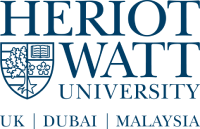Dr Vassilis Sboros
No more applications being accepted
Funded PhD Project (European/UK Students Only)
About the Project
“Super-resolution array beamforming for mapping cancer using ultrasound imaging"
Supervisors: Dr Vassilis Sboros (Institute of Biological Chemistry, Biophysics and Bioengineering, Heriot Watt University), Prof Mathini Sellarthurai (Institute of Sensors Signals and Systems, Heriot Watt University) Prof Alan McNeill (Department of Urology, Western General Hospital and University of Edinburgh).
We have proposed a new super-resolution imaging method based on diagnostic ultrasound in order to detect cancer early. Our first data from prostate patients (see images below where the tumour areas are depicted in yellow and red) suggest that super-resolution ultrasound is feasible. Since cancer has different blood flow compared to the normal prostate the proposed technology aims to provide at least a 10-fold improvement in the detail in mapping the blood flow (i.e. from half a millimetre to a 20th of a mm). This unique method will help determine the state of a tumour and potentially save lives.
A new revolutionary ultrasound imaging approach will be developed in this project. Using adaptive sensing methods, first applied in radar and astronomy, we aim to produce a new beamforming tool that beats the diffraction limit with resolutions up to 2 orders of magnitude better than current technology. The technique is based on adaptive array beamforming methodologies. The aim is to track microbubble contrast agents in the circulation thus generating images of the vascular network. This project will deploy the strong scatter from single microbubbles as a priori knowledge for implementing adaptive beamforming methods as used in optics, radar and astronomy. Existing simulation software will enable the method to be tested in in an ultrasound field. This will inform experiments that will fine tune these algorithms in vitro and in vivo. As the work involves the development of new technology the patenting of the results is likely. Good knowledge of related array theory and the required mathematical tools are expected by the candidate (such as Matrix Rotation, Numerics, Bayesian statistics).
Applicants
Candidates must have obtained, or expect to obtain, a UK MSc degree or undergraduate honours degree (first class) in a related field, or an equivalent quality degree obtained outside the UK.
How to apply
For informal enquiries and applications including a CV, please contact Vassilis Sboros ([Email Address Removed]).
Tel: 0131 451 8015
Closing Date: 28th February 2019.
The studentship should start in September or October 2019.
Funding Notes
The candidate will work with physicists, engineers, life scientists and as part of an international collaborative network that also includes significant industrial partners (Philips Medical Imaging Ltd, BK Medical, and Lantheus Medical Imaging Inc). This 3yr PhD studentship is funded by the EPSRC DTP scheme. The annual stipend will be as set by the EPSRC for 3½ years. The studentship is only available to UK nationals or students from EU countries who have settled status and have been resident in the UK for 3 years prior to the start of the studentship. Consumables and contribution to travel expenses are included. Fees for non-EU applicants are not covered.
References
Diamantis K et al. Super-resolution Axial Localization of Ultrasound Scatter Using Multi-focal Imaging. IEEE trans Biomedical Engineering. 2018; 8: 1840-1851. Diamantis K et al. Resolving Ultrasound Contrast Microbubbles using Minimum Variance Beamforming. IEEE Transactions on Medical Imaging 2019; 38: 194-204. DOI 10.1109/TMI.2018.2859262.

 Continue with Facebook
Continue with Facebook

